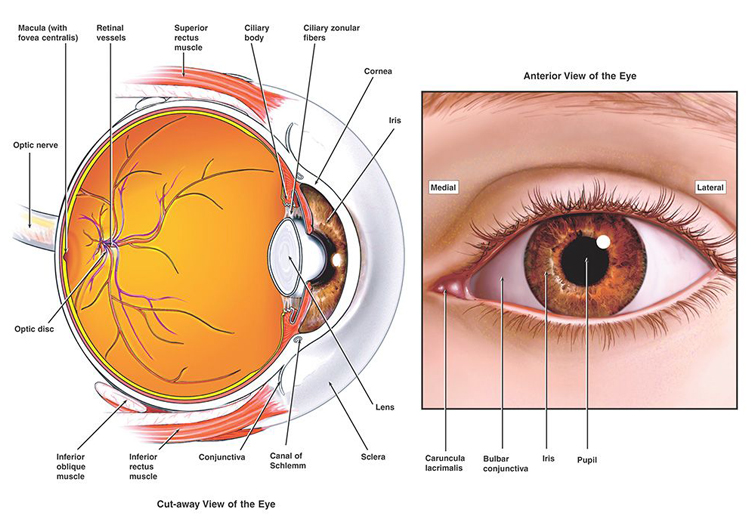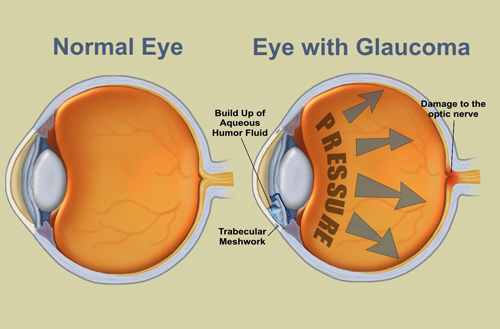Glaucoma
What is Glaucoma?
Glaucoma is a disease of the optic nerve - the part of
the eye that carries the images we see to the brain. The
optic nerve is made up of many nerve fibers, like an
electric cable containing numerous wires. When damage to the
optic nerve fibers occurs, blind spots develop. These blind
spots usually go undetected until the optic nerve is
significantly damaged. If the entire nerve is destroyed,
blindness results.
Early detection and
treatment by your ophthalmologist are the keys to preventing
optic nerve damage and blindness from glaucoma.
Glaucoma is a leading cause of blindness in the world,
specially for older people. But loss of sight from glaucoma
can often be prevented with early treatment.


Causes of Glaucoma
Clear liquid called aqueous humor circulates inside the
front portion of the eye. To maintain a healthy level of
pressure within the eye, a small amount of this fluid
produced constantly while an equal amount flows out of the
eye through a microscopic drainage system. (This liquid is
not part of the tears on the outer surface of the eye.)
Because the eyeball is a closed structure, if the drainage
area for the aqueous humor-called the drainage angle-is
blocked, the excess fluid cannot flow out of the eye. Fluid
pressure within the eye increases, pushing against the optic
nerve and causing damage.
What are the different
types of glaucoma?
Chronic
open-angle glaucoma:
This is the most common form of glaucoma.
The risk of developing chronic open-angle glaucoma increases with age. The drainage angle of the eye becomes less efficient over time, and pressure within the eye gradually increases, which can damage the optic nerve. In some patients, the optic nerve becomes sensitive even to normal eye pressure and is at risk for damage. Treatment is necessary to prevent further vision loss.
Typically, open-angle glaucoma has no symptoms in its early stages, and vision remains normal. As the optic nerve becomes more damaged, blank spots begin to appear in your field of vision. You typically won’t notice these blank spots in your day-to-day activities until the optic nerve is significantly damaged (nearly 80%) and these spots become large. If all the optic nerve fibers die. Blindness results.
Closed-angle glaucoma: This form of glaucoma is perhaps more common in our country than in other parts of the world.
Some eyes are formed with the iris (the coloured part of the eye) too close to the drainage angle. In these eyes which are often small and farsighted, the iris tissue encroaches into the drainage angle and blocks it so that the fluid cannot exit the eye. The intraocular pressure rises rapidly and causes an acute closed angle attack.
Common symptoms include:
- Blurred vision
- Severe eye pain
- Headache
- Rainbow-colored halos around lights
- Nausea and vomiting



